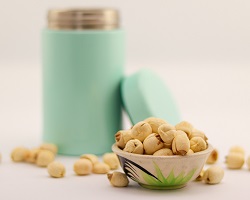Words: Team THINKWELLNESS360
India is the world’s foremost producer of cashew nuts.
Cashew trees produce a fruit-like shoot — the cashew apple — well, the name is a misnomer, because they look so much like pear. The cashew nut is attached to the end of the cashew apple. It has a smooth, ash-tinted outer shell.
The eatable seed of the nut ranges between three-quarters of an inch and one inch in its whole span. Its botanical name is Anacardium [There’s a homeopathic remedy made or ‘potentised’ from it]. It bears a striking resemblance to the shape of a heart, albeit cashews, yet again, are kidney-shaped.
It is difficult to buy good cashews [in the shell] because the edible seed is concealed with an internal casing, just as much as the space between the inner and outer shells is ‘packed’ with a thick, acidic, harmful oil. Don’t go for unshelled cashew nuts that are not roasted. They may scald your mouth and lips and trigger blisters on your skin.
Cashew nuts are a rich source of iron, phosphorus, and zinc, as also riboflavin, thiamin and potassium. Monounsaturated fat is the principal source of healthy fat in cashew nuts. They are, when eaten in small, prudently limited amounts, and with discretion, good for your heart and blood sugar levels.
Things to Do
The sweet, buttery flavour of cashew nuts, is best heightened by roasting. Cashews that we buy are ready to use. It is best to buy cashews that are vacuum-packed in cans. This assures their utmost freshness.
Lotus Seeds
 The lotus plant and, more so, its flowers have been used since time immemorial in India, China, South-East Asia and Egypt, as a themed pattern, or motif. While most of us know for a fact that its ornamental flowers are much sought after — especially in places of worship — not many know that the lotus plant also has eatable roots and seeds. The creamy seeds are used to provide a mild, appetising flavour to cooking in certain countries, especially in the exotic east.
The lotus plant and, more so, its flowers have been used since time immemorial in India, China, South-East Asia and Egypt, as a themed pattern, or motif. While most of us know for a fact that its ornamental flowers are much sought after — especially in places of worship — not many know that the lotus plant also has eatable roots and seeds. The creamy seeds are used to provide a mild, appetising flavour to cooking in certain countries, especially in the exotic east.
Aside from the seeds — which have different names, viz., Indian lotus, hasu, and nelumbo — the roots of the lotus plant are edible. When they are sliced and cooked, they turn light brown and starchy — the roots, thereafter, have a crunchy consistency. They are most often used as a vegetable in Eastern cuisine. Some also relish eating the leaves, especially the fresh, growing leaves — they can be eaten raw. The leaves that are fully formed may are used to wrap rice and meat dishes before being steamed for a nice meal.
Lotus seeds contain vitamin B, vitamin C, vitamin A and E, including other essential minerals, viz., magnesium, potassium and sodium. They possess anti-inflammatory and antioxidant properties.
Things to Do
You should always buy fresh, dried, and canned lotus seeds. It is okay if the fresh seeds are sold with the seed coat attached or detached. Remember — whatever the form, the two types rot quickly. Make sure the seed coats are detached before you eat the nut.
Lotus seeds may be eaten raw, or cooked. They may also be candied and consumed as a morning or evening chow. You’d add them to your pastries as a filling. Or, you may stew them with poultry, or add to stir-fry meals, or cook in water to make a pudding.

